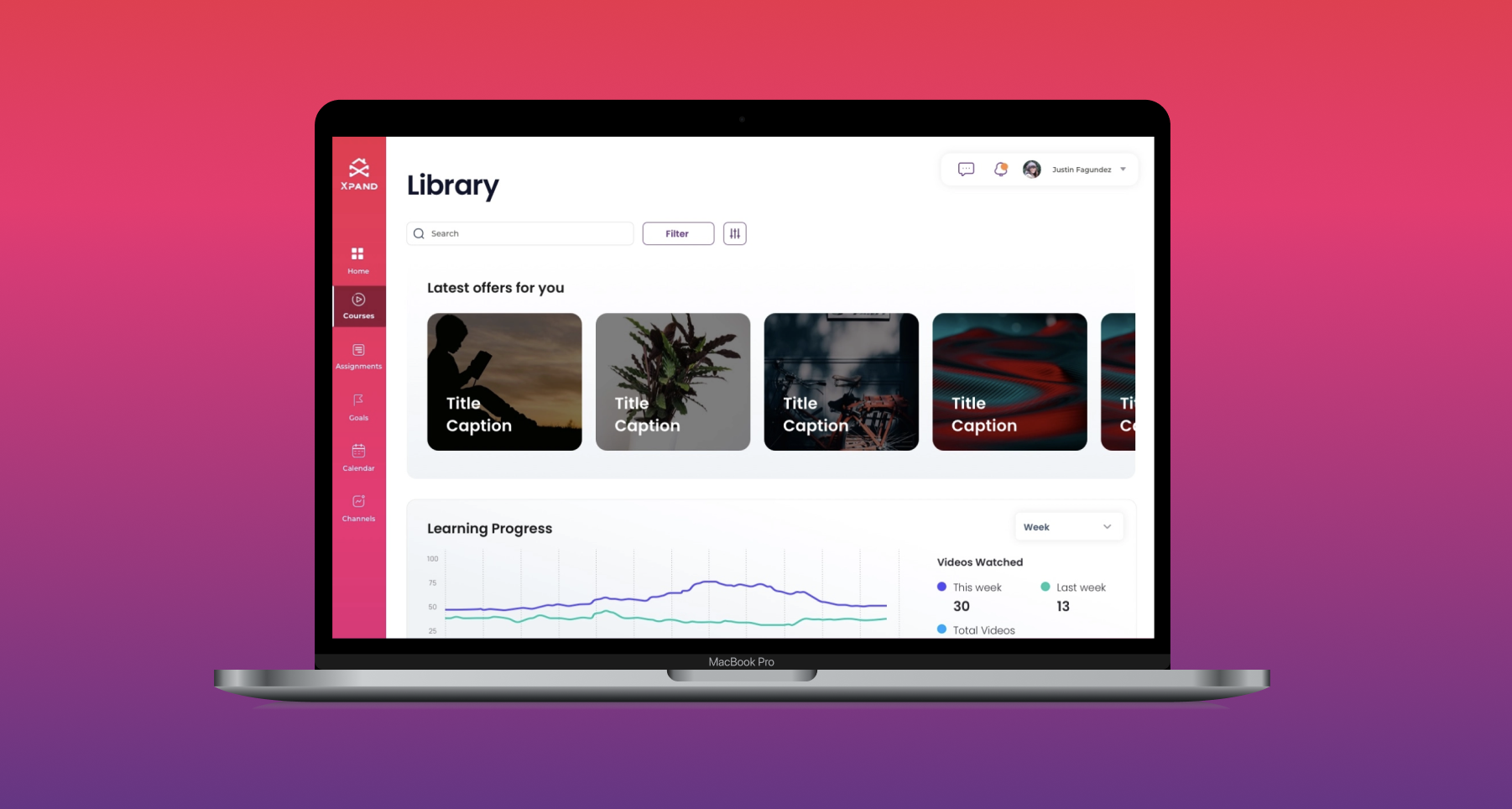
Xpand Course Creation
What do I film? What do I put in this online system? I am going to walk you through some simple thought processes that will spark some ideas for you. Pull out your whiteboard, or open up a document you can start brainstorming ideas for content creation. The easiest way to come up with content is by simply listening to the questions your people are constantly asking, and start with that. If you can make a “XYZ for Dummies” digital video manual this will be the fastest way to create the biggest impact.
Start with an outline:
- What are the major topics on which you consistently train?
- What are the subtopics of the major topics?
Example: Fitness Coach – DeAnnas Fitness Program
- DeAnnas Fitness Program
- Welcome to DeAnnas Fitness Program
- My Story
- What the program consists of
- Common questions
- Mindset
- Visualize Results
- Overcome Temptations
- Cultivate Positive Environment
- Consistency over Intensity
- Goals and Tracking
- Small goals that lead to major goals
- Planning
- Logging workouts
- Logging diets
- Sharing wins
- Consistent reminders
- Diet
- Types of Diets
- Body Types
- Understanding Labels
- Nutrients Breakdowns
- Knowing your macros
- Best Practices
- In Home Workouts
- Legs
- Arms
- Chest
- Booty
- Back
- Gym Workouts
- Legs
- Arms
- Chest
- Booty
- Back
This would be a simple outline a fitness coach might use to get started. Obviously you could make this SUPER robust, but give yourself a place to get your version one out. Don’t overwhelm yourself with all the minor videos you “could” put on the platform, just start by filming something!
The best part of a digital platform is you don’t have to reprint 1000 copies of your manual everytime you make an edit. I have swapped out, reshot, added videos monthly for the last 5 years to my own platform. Look at creating online training as the following process:
- Basic Outline
- Film
- Edit
- Upload
- Optimized Outline
- Film
- Edit
- Optimize
- Repeat…
Set Up and Equipment:
Creating your own home studio isn’t that hard or expensive. Key components are a clean backdrop or setting, good audio, good lighting and proper camera angle. If you are someone looking for an inexpensive solution:
Budget:
- White Paper Backdrop
- Phone/Video Camera
- Bluetooth Mic to Phone
- Ring Light
Solid At Home Set Up:
- Green Screen + White/Black Backdrop
- Substitute for office or family room feel with nice decor and lighting
- Studio Lights
- Lav Mic
- 2 DSL Cameras
- 2 Tripods
- 2 SD Cards
You can make the second set up above as fancy as you wish and spend thousands on each of those components, but at the end of the day your goal is getting something out into the marketplace. The first few courses I made were my phone with a white wall in the basement kitchen with a terrible echo. I still was able to sell this, and make great money to start working my way to get nicer and nicer camera equipment and improve my video quality. What I found was that people just appreciated me putting the videos together regardless of the cimitography. They were just happy they had training!
Another important tool to have is a computer and phone screen recording option. A lot of the videos you are going to want to film are screen recordings of processes. You need to be able to show how to use certain tools you provide. Use the video conference element of Xpand or download free tools like loom.com to record and save your videos to upload to your courses.
Editing:
For those that are just starting out you can edit your own videos, but oftentimes you will find this will be the bottleneck of your production. This is time consuming and most leaders don’t love spending hours and hours watching themselves on camera and figuring out editing software. What I found was by outsourcing this overseas I could get more videos knocked out, and very inexpensive editing done. Upwork.com and Fiverr.com are two online outsourcing sites that I’ve had great success with.
Upload your videos to dropbox or google drive, and give clear instructions on what you are looking for out of the videos.
- Intro video
- Video Titles
- Names in the lower thirds
- Call to actions at the end of videos
- Background music
- Graphics
- Transitions
- Emphasis texts on key points (font types)
- Green Screen Backgrounds
These are all things to help give direction around. Once you find your look and feel you are going for, then this process becomes much faster. Not every overseas employee is going to be the best. This is why I like to send my project out to 4-5 of them, and see who seems to follow directions, and produce the best quality in a timely manner. Then hire that contractor more long term.
Uploading and Organize:
Upload your videos to the Xpand platform, and organize them with titles, descriptions and thumbnails. You want to make it easy for users to search your courses as you continue to add more to the platform.
As you upload your courses into Xpand, think about what programs they may pertain to. We also have assignments that we will go over in future chapters. Assignments are homework you can assign to your users. These courses might fall under certain phases of homework that you will eventually want your people to follow.
Another organizational element to courses in Xpand is to think of what “Content Role” these pertain to. Meaning as you add a user to the platform you will assign them specific content roles. These are designed to automate the assignment of content the user receives. For example if you were a business owner and you were to create content for all departments in your business, you don’t want your sales people getting the training videos on how to install the product, and your installers videos on how to sell it. You just want them to receive the content that is relevant to them specifically.
Content Role: Rookie Sales
- Intro to Company
- Beginner Sales Course
- Product Knowledge
Content Role: Advanced Sales
- Advanced Sales Course
- Competitor Analysis
- Closing Techniques
Content Role: Installer
- Product Knowledge
Content Role: HR
ETC….
When you upload users in Xpand make sure to put them in their appropriate content role. As your users advance – go in and add them to future content roles.
Hierarchy:
Make sure in Xpand you properly assign management permissions to users. Put users under the proper team. When you give a manager of a team permission to view reports and add users and coach the people below them, you are now empowering them to follow the same leadership frameworks. You want to train them on how to check in with the learning progress of their people, and leverage the content to automate their leadership style. If they don’t understand what is available on the platform, it is harder for them to prescribe the proper medicine to their people when they come to them with problems.

